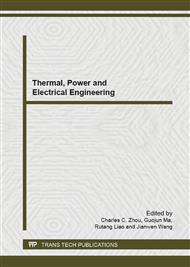p.1255
p.1261
p.1265
p.1271
p.1283
p.1288
p.1292
p.1297
p.1303
A Method of Distributed State Estimation in Dispatch Central Based on Ripe Data and Topology Model of Substation
Abstract:
In this paper, a method of distributed state estimation in dispatch center based on ripe data and bus topology information of substation is proposed. Substation state estimation solves the reliability issues of basic data by means of processing the redundant information in substation side. By using a large amount of data source information of substation, state estimation can be performed efficiently in substation. On the basis of the unified data standard between master center and substation, uploading ripe data and calculation nodes topology structure are acquired in dispatch center level. Data rationality and consistency check of substation improve the state estimation accuracy of topology identification in dispatch master system. And also it provides reliable data for the online analysis software.
Info:
Periodical:
Pages:
1283-1287
Citation:
Online since:
August 2013
Authors:
Price:
Сopyright:
© 2013 Trans Tech Publications Ltd. All Rights Reserved
Share:
Citation:


